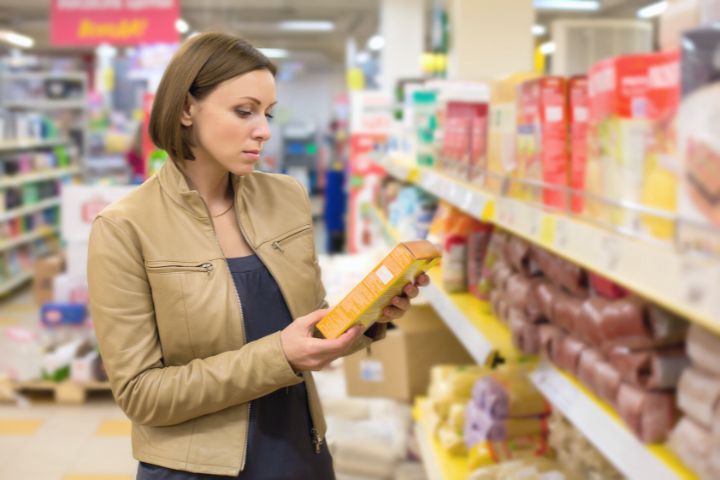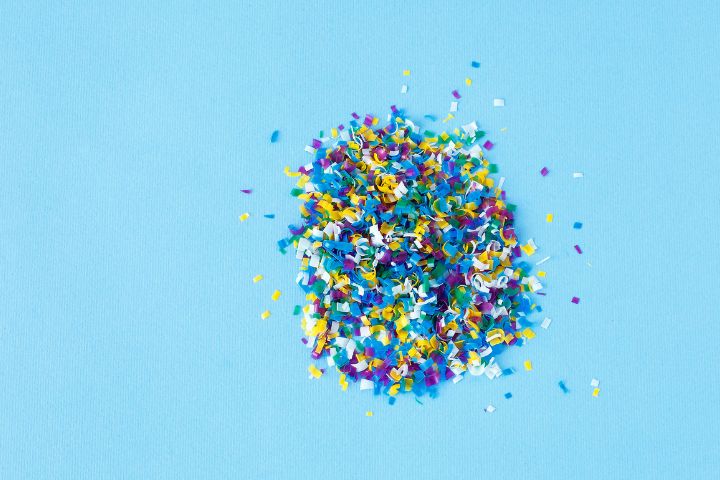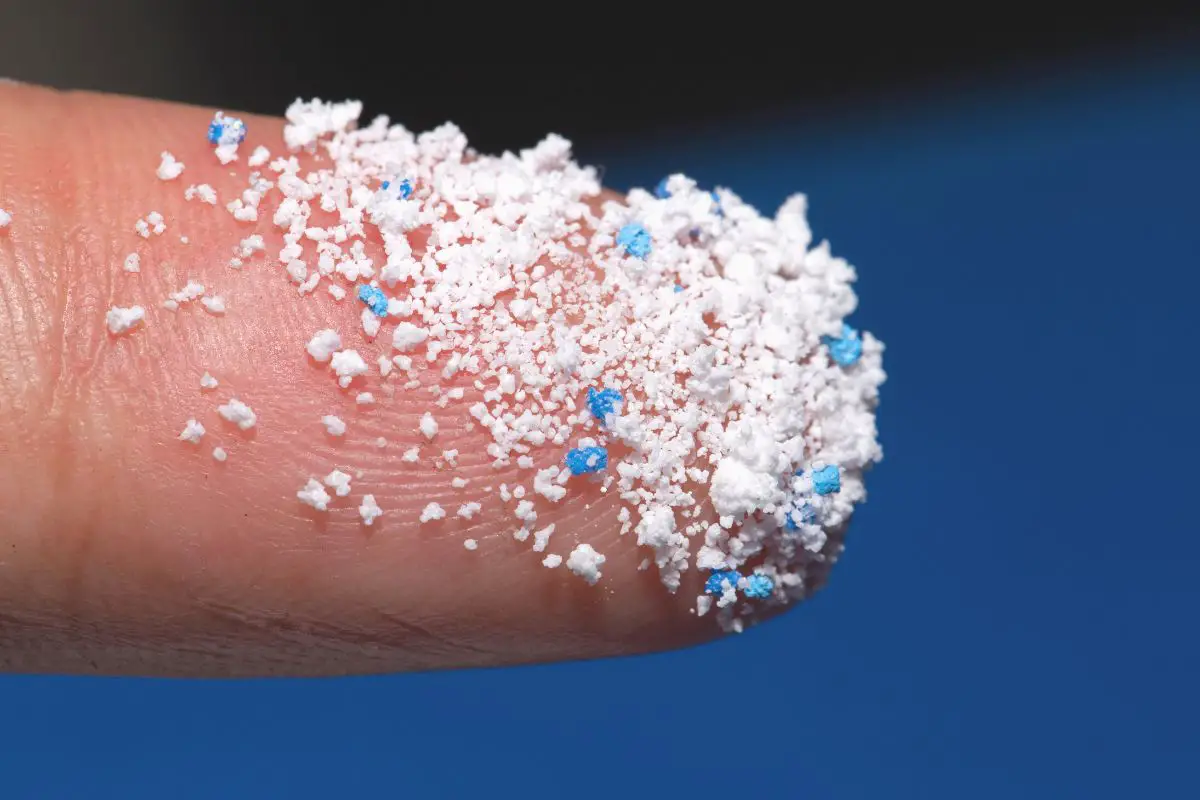How to Avoid Microplastics | They’re all over, food included!
Microplastics are tiny pieces of plastic that are smaller than five millimetres in size. They can come in many different forms, including beads, pellets, fibres and shards. They can come from a variety of sources, including synthetic clothing, car tires, and even face wash!
These tiny pieces are a breakdown of larger plastic items that have been discarded in the environment, or from items that were intentionally added to products such as cosmetics and toothpaste.
Microplastics pose a significant risk to the environment because they can easily enter water sources and be ingested by wildlife and aquatic life. This can cause serious health issues for these creatures and can disrupt entire ecosystems – all while contributing to plastic pollution, which is a major environmental problem.
It’s important to be aware of how to avoid microplastics and the impact they have on the environment. This guide will provide an overview of how to avoid microplastics, check for their presence and reduce their impact on the environment.
Related Articles: How Laundry Detergents Impac the Environment
Where are Microplastics Found?
In Water
Microplastics enter water sources through the breakdown of larger plastic items, so it’s important to reduce or replace single-use plastics whenever possible. Investing in a reusable water bottle or container is a great way to cut down on plastic waste.
Additionally, you can filter your water with a reverse osmosis system to remove any microplastics that may be present in your drinking water. Finally, making sure to buy sustainable seafood is also important as farmed fish can contain microplastics from the water they are raised in.

With 71% of the earth is made up of water, it’s so important to take the necessary steps to keep as much plastic out of our waters as possible. The detrimental impact is more severe on sea life than it is for us, and every year thousands of sea creatures are killed directly as a consequence of pollution, with a significant portion of that being plastics.
In Food
When it comes to food, choosing organic items whenever possible is a great way to reduce your exposure to microplastics. Buying fruits and vegetables unpackaged is also a good way to stay away from microplastics that may be present in plastic packaging. Making your own food at home instead of buying pre-packaged items is a great way to cut down on plastic waste, and avoiding processed foods is also important as they may contain microplastics.
Understandably, it’s not always possible to grow your own food, due to space restrictions in congested cities, however, a good tip is to source a sustainable local farm and either drive out to them or come to an agreement where they deliver your products from their farm to your home.
Manufacturing
Plastic and rubber manufacturing processes often release small pieces of plastic into the environment. These particles can range in size from very small to large chunks of plastic. Similarly, silicon production can produce microplastics as a byproduct. As these items are produced, some of the plastic may end up in our environment as microplastics.
Waste Disposal
Plastic bottles can break down into small pieces over time due to wear and tear or exposure to sunlight. Similarly, packaging materials such as bubble wrap and Styrofoam can break down into tiny pieces when exposed to the elements or when disposed of improperly. Sea salt can also cause plastic to degrade more quickly, which releases microplastics into our environment.

Synthetic clothing and furniture fabrics can also degrade into microplastics when exposed to the elements or washed in washing machines. All of these sources can contribute to the presence of microplastics in our environment.
Ways to Avoid Consuming Microplastics in Food
- Microplastics can enter the food chain through water contamination or the use of plastic packaging for food products. Common sources include plasticized fish nets, plastic bags used for storing seafood, and pre-packaged processed foods.
- Choose fresh, local, and organic produce whenever possible: Buying local produce from farmers’ markets or through farm-to-table programs is a great way to reduce your microplastic consumption. These products are often grown without the use of plastic packaging or fertilisers with microplastics in them.
- Check food labels to make sure products don’t contain microplastics: Many products now list “microbeads” somewhere on the label. These are small pieces of plastic that are used as exfoliants in some facial scrubs and body washes. Make sure to check labels carefully before buying any product that may contain microbeads.
- Use a water filter that is certified to remove microplastics: Tap water can contain small amounts of microplastics that have found their way into our waterways. To reduce your intake of these particles, make sure to use a water filter that is certified to remove microplastics.
- Be mindful of the packaging used for food when shopping: Plastic packaging is one of the most common sources of microplastics in our food supply. Whenever possible, try to buy products that are packaged in glass or paper rather than plastic.
- Opt for plant-based proteins instead of seafood: Seafood is especially prone to contamination with microplastics due to the use of plasticized fishing nets and bags for storing seafood. If you’re looking for a protein alternative, opt for plant-based proteins such as beans, lentils, nuts, and seeds instead of seafood.
- Consider an ocean-friendly diet: Eating an ocean-friendly diet is another great way to reduce your intake of microplastics while also supporting sustainable fisheries and protecting our oceans from overfishing and pollution. This means avoiding fish with high levels of plastic contamination (such as anchovies and sardines) and opting for more sustainable options (such as pole-caught tuna).
- Support businesses that are committed to reducing plastic waste: There are many businesses out there that are taking steps to reduce their use of plastic packaging or find alternatives to it. Look for businesses that have committed to reducing their plastic waste and support them with your purchases whenever possible.

What is the Impact of Microplastics on Health
Unsurprisingly, exposure and ingestion of microplastics can lead to negative health effects.
- Potential exposure to toxic chemicals associated with plastics: Microplastics can contain a variety of chemicals such as Bisphenol A (BPA), phthalates, and other endocrine disruptors which can pose health risks if ingested in large quantities over time.
- Increased risk of digestive disorders due to ingestion of microplastics: The ingestion of small amounts of microplastics can cause inflammation in the digestive tract and lead to digestive disorders such as irritable bowel syndrome or Crohn’s disease over time.
- Possible disruption of hormones due to exposure to BPA and other chemicals: Exposure to BPA and other endocrine disruptors can cause hormonal imbalances which can lead to a variety of health issues such as infertility or obesity over time.
- Possible risks associated with consuming seafood contaminated with microplastics: Seafood contaminated with microplastics can contain high levels of heavy metals which can be toxic if consumed in large quantities over time.
Where Else Do Microplastics Come From?
Microplastics are also present in clothing, bedding and other household items made from synthetic fibers. To reduce your exposure to microplastics, choose natural fibers such as cotton or wool instead of synthetic materials.
Additionally, avoiding products with plastic packaging is also important when shopping for these items. Using natural beauty products instead of synthetic ones is another great way to reduce your exposure to microplastics.
Finally, it’s important to abstain from using single-use plastics such as straws, disposable cutlery and utensils when eating out or at home. Choosing glass or stainless steel containers for food storage is also important as these materials do not contain any microplastics. Also, be sure to avoid using plastic wrap to cover food – this can help reduce your exposure to microplastics.
FAQs

What is the Impact of Microplastics on the Environment
Microplastics are small enough to be ingested by wildlife and humans alike. This can lead to potential exposure to toxic chemicals associated with plastics, increased risk of digestive disorders due to ingestion of microplastics, disruption of hormones due to exposure to BPA and other chemicals, and possible risks associated with consuming seafood contaminated with microplastics. It’s important to be mindful of packaging when shopping.
Opting for plant-based proteins instead of seafood, considering an ocean-friendly diet, supporting businesses committed to reducing plastic waste, and buying unpackaged items in bulk whenever possible, can all help reduce our environmental impact!
Can Microplastics be Broken Down?
Some types of microplastics are biodegradable, meaning they can be broken down by natural processes over time. Ways to break down microplastics include physical processes such as sieving and filtration systems, chemical treatments, and biological processes such as bacteria. Potential solutions for managing microplastics include educating the public about their impact and advocating for legislation to limit their use.
How Can We Get Rid of Microplastics?
Ways to get rid of microplastics include disposing of them in landfills, incinerating them, and recycling them into new products. Recycling microplastics can be difficult due to their small size and the fact that they are often contaminated with other materials. It is important to properly dispose of microplastics in order to prevent them from entering the environment.





